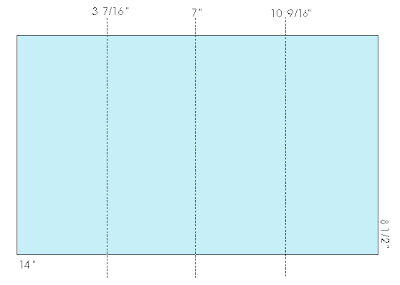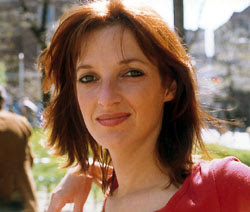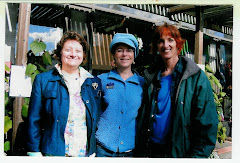2008 -- Each year, near the conclusion of the second Pesach seder, we begin to count the omer. We count for 49 days, reciting the appropriate blessing every evening. Remember: The Jewish day begins at sunset; therefore, for example, if the 10th day of the omer falls on April 30, we recite the blessing for that day on the preceding evening, April 29. (Click here for the blessing you recite as you count the omer.) The 50th day is Shavuot. As you count the omer, spend some time thinking about important Jewish issues. The following questions and reflections may help get you started.
Here are great sites for Counting the Omer fun:
Calendar with blessings
http://www.akhlah.com/holidays/omer/omer_count.php
Counting the HOMER (Simpson)!
http://homer.jvibe.com/Welcome.html
Coloring holidays online, the J site
click on the "Jewish Coloring Book" link, and then move through the topics
Day 1 (16 Nisan) - Why do you think we recite the blessing for the counting of the omer during the evening?
Day 2 (17 Nisan) - Long ago, Jews brought a certain measure of barley (an omer) to the Temple each day as an offering to God. What kind of offering might you make today?
Day 3 (18 Nisan) - Think about the preparations that culminated in the celebration of Pesach this year. Do the rules, rituals, and restrictions associated with this holiday enhance your celebration? How?
Day 4 (19 Nisan) - Pesach brought us freedom; Shavuot brought us the Law. What does the linking of these two holidays -- and concepts -- teach us?
Day 5 (20 Nisan) - One name for Shavuot is Atzeret, which means a concluding festival. What does this suggest about the relationship between Pesach and Shavuot?
Day 6 (21 Nisan) - Pesach is a celebration of the Exodus, in which God demonstrates God's power by, for example, dividing the Red Sea. Do you think witnessing miracles alone can create faith in God?
Day 7 (22 Nisan) - Today is the last day of Pesach in the diaspora and we recite Yizkor in the synagogue. Why do you think it is important to recite the memorial prayer even on our most joyous holidays?
Day 8 (23 Nisan) The period during which we count the omer is called s'firah, counting. During this time we limit occasions for public rejoicing, and generally we refrain from holding s'machot, particularly weddings. What are the reasons for this practice?
Day 9 (24 Nisan) - When God spoke directly to the Jewish people before the revelation at Sinai, they were extremely frightened and asked Moses to serve as a go-between. What do you think frightened them?
Day 10 (25 Nisan) - Moses remained on the top of Mount Sinai for 40 days and 40 nights receiving the Law from God. During that time, the Jewish people built the Golden Calf. Why do you think they did this?
Day 11 (26 Nisan) - Today we commemorate Yom HaShoah, although it really falls tomorrow, on 27 Nisan. Consider adopting a family or personal ritual, such as lighting a yellow Holocaust candle available from the Federation of Jewish Men’s Clubs, to help bring the remembrance into focus.
Day 12 (27 Nisan) - Shavuot is called by many names, each indicating a different aspect of the holiday. (For example, Z'man Matan Torateinu refers to the giving of the Torah.) What other names for Shavuot have you learned, and what does each teach you about the holiday?
Day 13 (28 Nisan) - Shavuot celebrates the giving of the Torah on Mount Sinai. According to legend, this mountain was selectd because of its small size and modesty. What can we learn from this?
Day 14 (29 Nisan) - As we begin to anticipate receiving the Ten Commandments, consider the prospect of forming a society without such rules. Could it work? Would we want to be part of such a society?
Day 15 (30 Nisan) - Today is Rosh Chodesh Iyar. We recite a special prayer in honor of the new month. Add a private prayer for good health, sustenance, and peace.
Day 16 (1 Iyar) - Today is the second day of Rosh Chodesh. Why do we recite Hallel (psalms of praise) on Rosh Chodesh?
Day 17 (2 Iyar) - When Moses came down from the mountain and saw how the people were behaving, he lost his temper and broke the two tablets of the Law. What justification was there for his action?
Day 18 (3 Iyar) - Today is Yom HaZikaron, Remembrance Day (commemorated on 4 Iyar except when it would coincides with Shabbat). How have the sacrifices made by soldiers who have given their lives for the defense of Israel contributed to our lives?
Day 19 (4 Iyar) - Despite what had happened, Moses went back up the mountain for a second set of Laws. Would you have done the same?
Day 20 (5 Iyar) - Today is Yom Ha'Atzmaut, Israel Independence Day. What do you do to maintain your personal relationship with the Jewish State? What more might you do?
Day 21 (6 Iyar) - Consider the following: If it had been up to you to select Commandments, would you have chosen the same ones? What would you add? Which would you delete?
Day 22 (7 Iyar) - The commandment (mitzvah) to honor your father and mother is placed with those concerning our relationship to God and immediately before those concerning our relations with other people. What do you think is the reason for placing it in this bridge position?
Day 23 (8 Iyar) - The Ten Commandments is the only section of the Torah with two sets of trope. One is used for study and one for public reading. Why? What can we learn from trope?
Day 24 (9 Iyar) - When Moses descended from the mountain after receiving the Law, his face was lit up. What kinds of contemporary actions or events have this same effect?
Day 25 (10 Iyar) - On Shavuot, farmers brought their first fruits to the Temple in Jerusalem, representing the five species the Hebrews found when they entered the Land. Find out what fruits these included.
Day 26 (11 Iyar) - Processions bringing gifts to the Temple were joyous affairs, similar to parades. What Jewish practices today include processions?
Day 27 (12 Iyar) - Sharing in an experience, such as a procession, can be a powerful tool in developing group identity and a sense of community. What other mechanisms can you think of that build identity and community consciousness?
Day 28 (13 Iyar) - First fruits could be brought to the Temple only by the farmers themselves, not by tenants or employees. What can we learn from this for ourselves, our families, and our congregations?
Day 29 (14 Iyar) - Today, children on some kibbutzim in Israel collect fruit from surrounding farms, and on Shavuot they bring it to a central location, where they celebrate with singing and dancing. Compare this to your own Shavuot celebration.
Day 30 (15 Iyar) - Find out why has it become customary to eat dairy foods on Shavuot, and then plan your own Shavuot menu.
Day 31 (16 Iyar) - On Shavuot we read Megillat Ruth. Why is that text particularly appropriate for this holiday?
Day 32 (17 Iyar) - We learn in the Book of Ruth that Ruth, born a Moabite, was an ancestor of King David. What does this teach us about the value of those people who choose to convert to Judaism?
Day 33 (18 Iyar) - Today is Lag B’Omer, a popular holiday with Jewish schoolchildren worldwide and a day during s’firah on which we are permitted to rejoice. Find out why.
Day 34 (19 Iyar) - As Shavuot approaches, sfirah draws to an end. Note how many weddings are scheduled as soon as possible after this date!
Day 35 (20 Iyar) - According to an old custom, young children were given slates of Hebrew letters covered with honey to demonstrate the sweetness of Torah study. What practices might we institute today to achieve a similar result?
Day 36 (21 Iyar) - Plan to participate in an all-night Shavuot study session (Tikkun Leyl Shavuot). What might you want to study with friends or with a teacher?
Day 37 (22 Iyar) - Shavuot is also an agricultural festival. In what ways might those who live in urban and suburban areas relate to this aspect of the holiday?
Day 38 (23 Iyar) - Though Shavuot is one of the three major pilgrimage festivals, there are only a few rituals specifically associated with this holiday. Can you name them?
Day 39 (24 Iyar) - The Torah describes the sacrifices and rituals that made each holiday special. How can we enhance the beauty of our observance of the festivals?
Day 40 (25 Iyar) - God gave us the Torah in the desert of Sinai. What can we learn from this? Why wasn’t the Torah given in the Land of Israel?
Day 41 (26 Iyar) - According to one midrash, God offered the Torah to many nations. Only the Israelites accepted it unconditionally. What does this say about our relationship to the Torah?
Day 42 (27 Iyar) - According to another midrash, God held Mount Sinai over the heads of the Jewish people until they agreed to accept the Torah. What lesson does this teach?
Day 43 (28 Iyar) - Today is Yom Yerushalayim. We celebrate the reunification of this holy city, which happened in 1967. What crucial events in Jewish history occurred in Jerusalem? Look for references to Jerusalem when you pray.
Day 44 (29 Iyar) - Shavuot is one of three pilgrimage festivals, when the Israelites gathered in Jerusalem. If we can’t go to Israel today for the festivals, how can we re-create the gathering of all Jews during these holidays?
Day 45 (1 Sivan) - Today is Rosh Chodesh Sivan. Make a wish list for the world for the new month.
Day 46 (2 Sivan) - To be kosher, a Torah must be painstakingly written on specially prepared parchment using only special ink and feathered quills. How does this affect our relationship to the Torah, and our treatment of it?
Day 47 (3 Sivan) - The Torah scroll is carefully paraded and kissed, then lovingly lifted, held, and dressed. What do we learn from the physical treatment accorded a Torah scroll?
Day 48 (4 Sivan) - It is written that when the Torah was given, the Israelites said “Na’aseh v’nishma" -- We will do, then we will understand. What can we learn from this declaration?
Day 49 (5 Sivan) - The Torah teaches that the entire nation stood at Sinai to witness the giving of the Law. The rabbis teach that even future generations were present at Sinai. What does this say about Jewish continuity?
Shavuot - Chag Sameach!











